Digital Companion Robot Design for Older Adults
Research Center,
Yonsei University
Digital Companion Robot Design for Older Adults
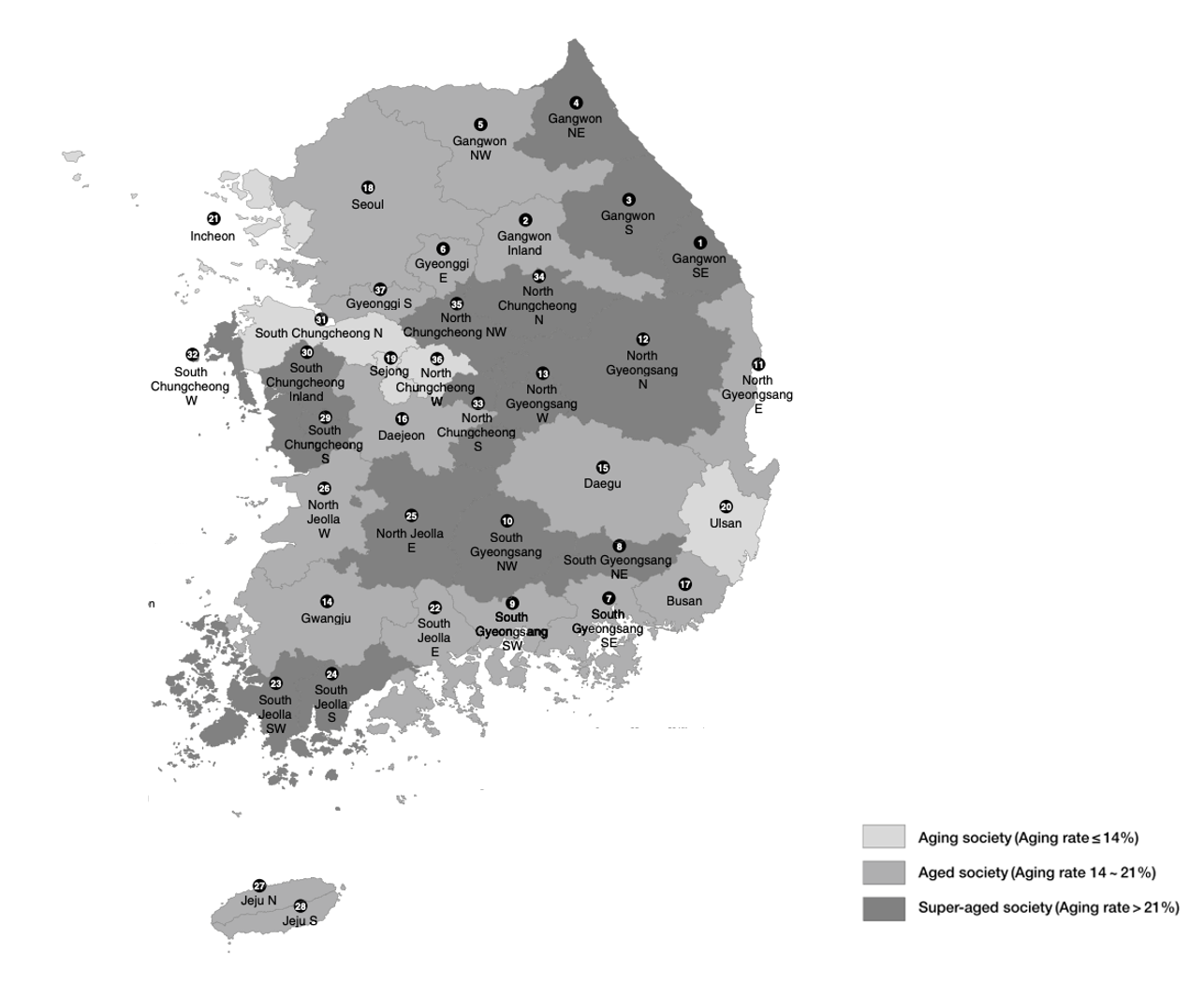
Social connections in our life help us in improving the quality and well-being of our lives. However, chances of being socially connected decrease in the cases of older adults, making them vulnerable to depression.
In 2017, South Korea had ofcially become an aged society, with more than 14 percent of its citizens 65 years old or older. It took only 17 years after South Korea became an aging society in 2000, while Japan took 24 years for the same transition (Chosun 2017). Companion robots can satisfy their needs since they are developed as technological intervention tools by providing service, companionship, and assistance in daily life.
In this project, our goal was to first understand the needs of older adults, evaluate the designed concepts, and finally prototype a companion robot.
Research Topics
Overview
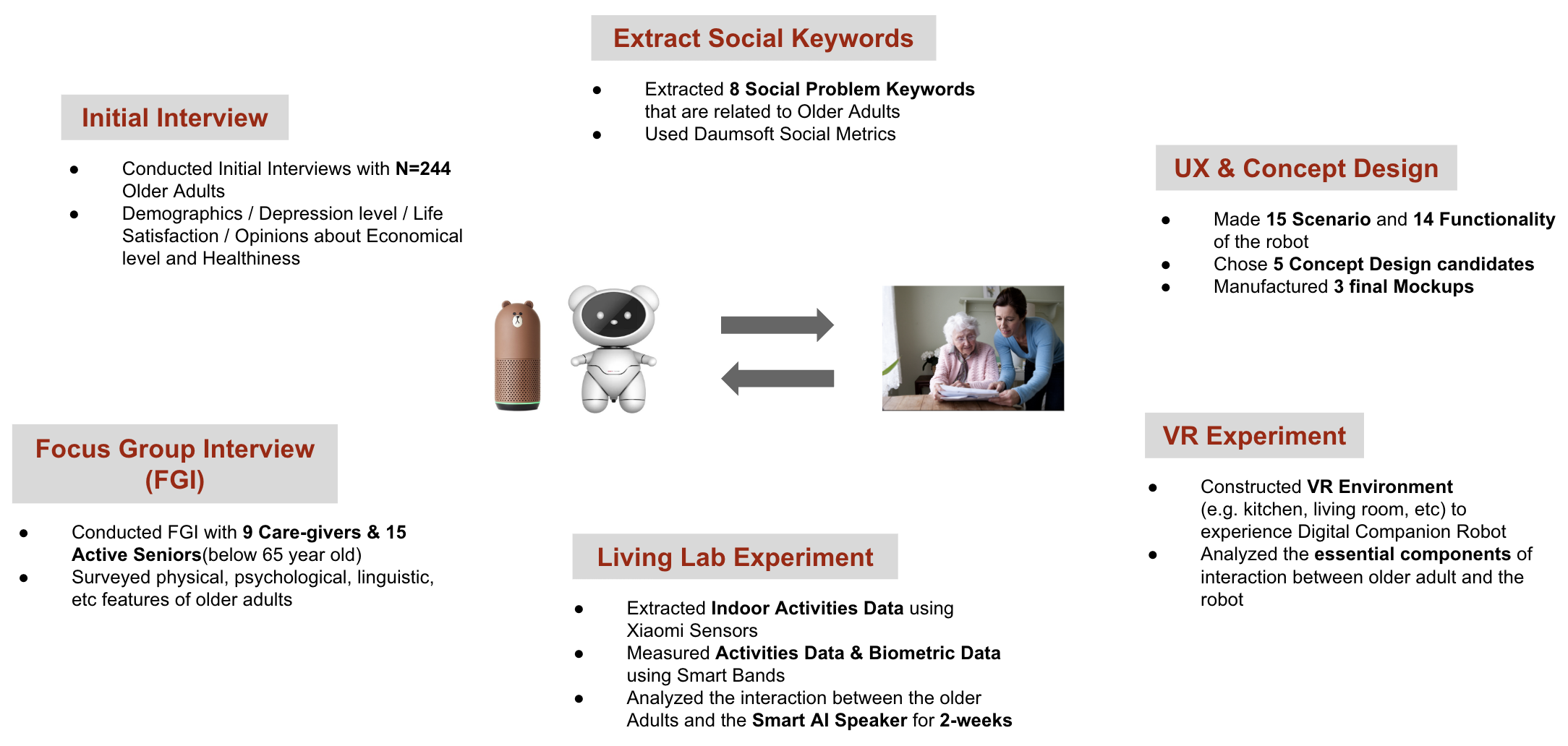
Experiments
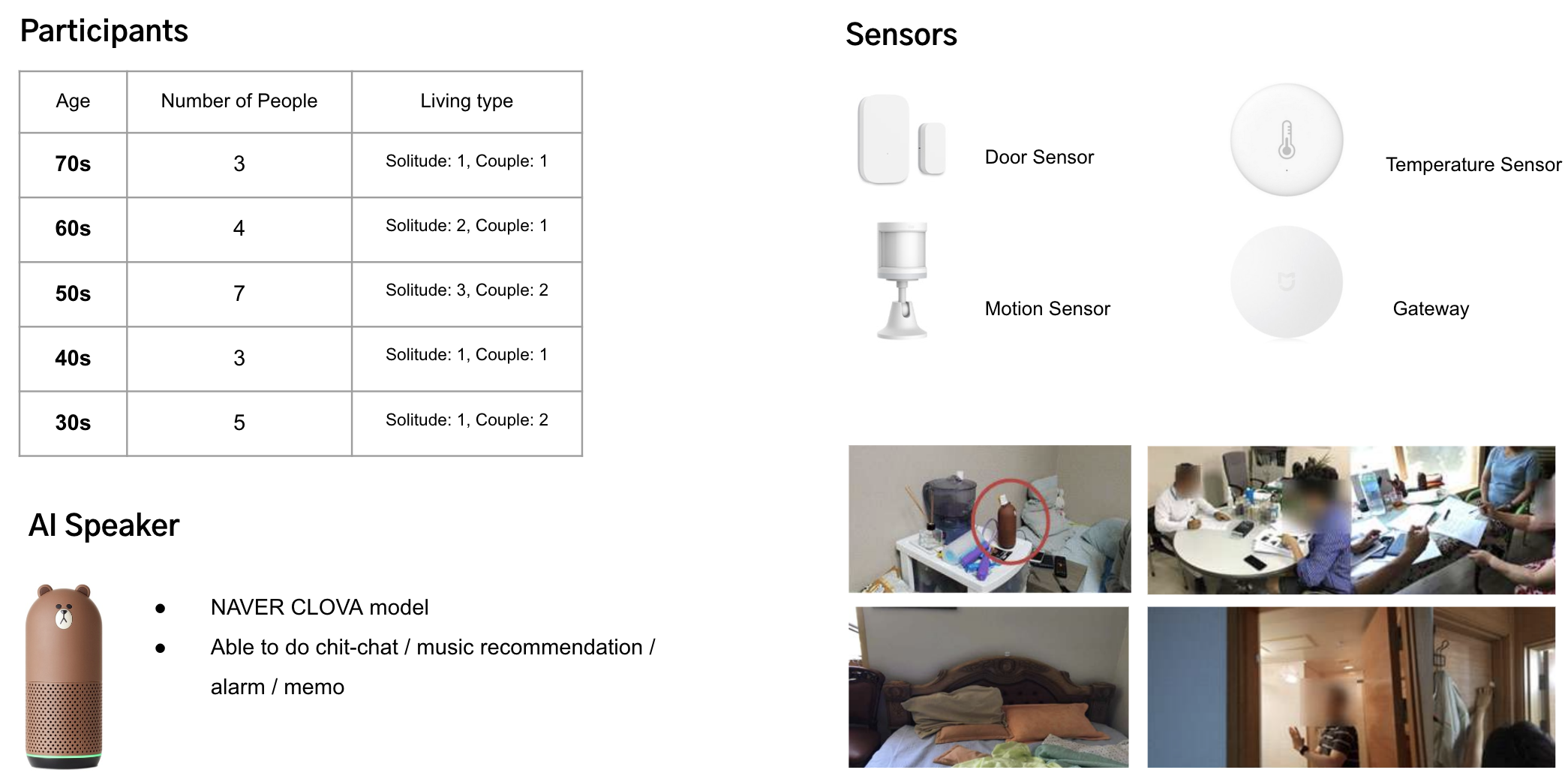
To investigate older adults’ living accommodations and their life patterns closely, we decided to conduct living-lab experiments with 22 participants between the ages of 70 and 90 for two weeks
Takeaways
1. Companion functionalities
The needs extracted from the caregivers and older adults during the FGI are organized as below:
-
LOS
Find frequently lost objects for older adults.
-
MED
Medication support for older adults.
-
CON
Help making a docter appointment.
-
ENV
Alarm dangerous things around older adults.
-
PAT
Analyze life patterns and manage emergency situations.
-
HEA
Monitoring older adults' health conditions and support telemedicine.
-
EAT
Talk with older adults while eating and nutrition management.
-
WEL
Welcome older adults in front of the door.
-
NEW
Notify new programs and the dates at senior centers.
-
WAK
Suggest and facilitate older adults' movement and exercise.
-
PHO
Show older adults' family photos depending on their moods.
-
VOC
Set companion's voice as their grandchild's.
-
FRN
Call older adults' friend.
-
GAM
Game contents for computer-assisted cognitive rehabilitation.
2. User scenarios
15 Scenarios were designed for older adults interacting with digital companion robots and below are the few examples:
# 1. Social Connections
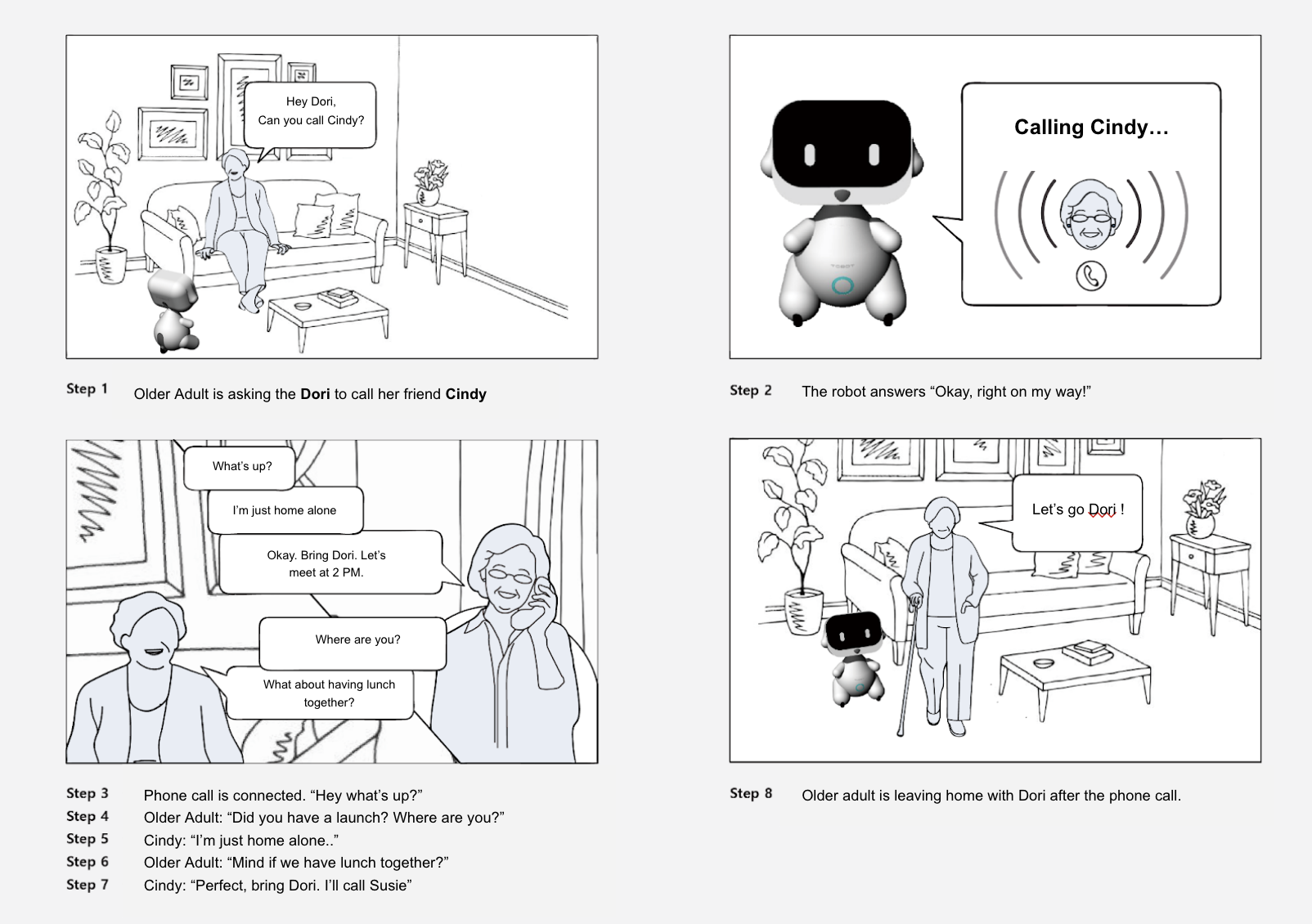
# 2. Social Connections
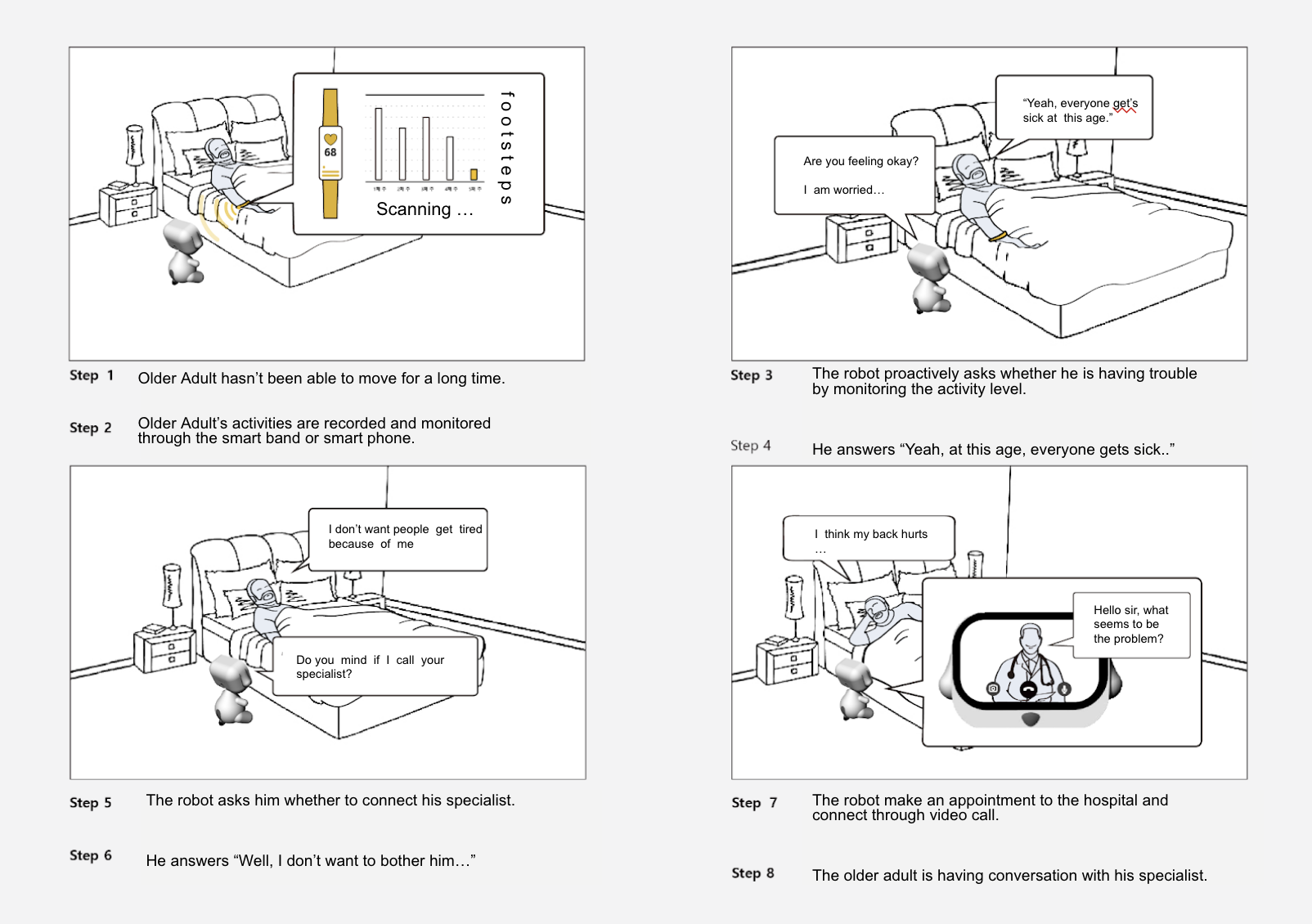
3. Concept designs

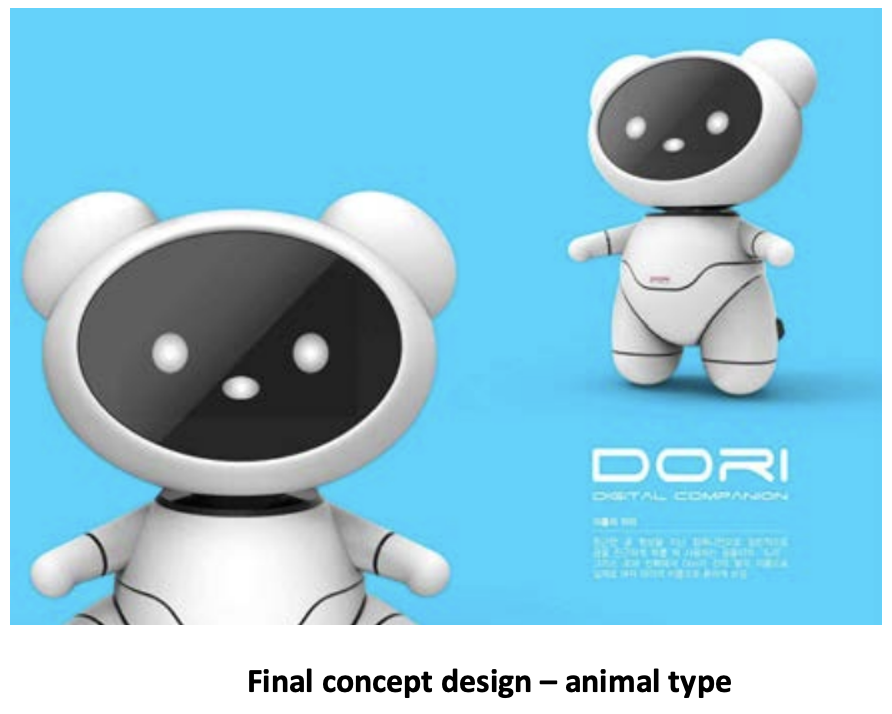
Above figure shows the collected companion robot designs from older adults and the final concept design was selected as (a) animal character type considering the design and robot functionalities.
With the animal character design, we could avoid uncanny valley effect (from the previous study) and 244 older adults responded that they prefer animal (bear, dog, seal) designs. Many older adults particularly mentioned that the robot design should bring warm (like bear) and familiar (like dog) feelings to the users.